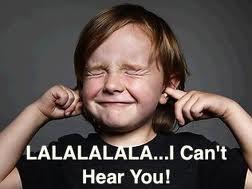American Atheists vs. Port Authority of NY & NJ
Key points in the decision:
- The Historical Exhibition will tell the narrative of the September 11 attacks and the 1993 World Trade Center bombing by incorporating over 800 artifacts. Within the Historical Exhibition will be a section entitled “Finding Meaning at Ground Zero,” which
will portray how those at Ground Zero struggled to cope with the horrific situation they faced. To cope, some turned to religion, patriotism, or forging relationships with relatives of victims.
- The Foundation plans to have
text panels explaining its historical significance to the recovery effort. Other objects of historical significance will also be in the section, including several pieces of “symbol steel,” which is steel that ironworkers at Ground Zero cut into religious and non-religious symbols, such as a Star of David, a Maltese cross, the Twin Towers, and the Manhattan skyline.
-
Plaintiffs concede that including the cross as part of the Historical Exhibition has a secular purpose. By incorporating the artifact in the section, “Finding Meaning at Ground Zero,” part of the September 11 historical narrative is told more fully, as the cross and its accompanying textual panels helps demonstrate how those at Ground Zero coped with the devastation they witnessed during the rescue and recovery effort. The cross, therefore, meets the first prong because
its actual purpose is historical and secular.
-
Courts repeatedly have recognized that including a religious artifact in a museum will often times negate any endorsement. A typical museum setting, though not neutralizing the religious content of a religious painting, negates any message of endorsement of that content
- Plaintiffs attempt to distinguish the instant Museum from other museums by claiming that the purpose of religious displays in encyclopedic and art museums is to “display . . . many
religious objects from different cultures together to maximize their educational value.” Plaintiffs argue that since the Museum is a memorial museum, the cross’s inclusion signifies endorsement. This attempt to distinguish types of museums is unsupported by any case law. Moreover, simply because a museum was created in part to commemorate a tragedy or an event does not make it less of a museum. Numerous museums, such as the National World War Two Museum and the United States Holocaust Memorial Museum, have both historical and memorial components yet are still museums.
- Plaintiffs assert that because the cross was used during Christian religious ceremonies, it is unlike historic religious objects that are housed in museums. They, however, cite to no case law making such a distinction. Rather,
the fact that the artifact is housed in the historical Exhibit helps to negate any “sacred message” even though it “undeniably has a religious message.” Moreover, the acknowledgment that many rescuers and volunteers found solstice in the cross is not endorsement of their religion.
- Because a reasonable observer would be aware of the history and context of the cross and the Museum——especially given that the cross will be housed in the “Finding Meaning at Ground Zero” section, accompanied by placards explaining its meaning and the reason for its inclusion, and surrounded by secular artifacts——
no reasonable observer would view the artifact as endorsing Christianity.
- the cross is going to be displayed as a subject of history thereby negating entanglement.
- Since the decision to include the artifact in the Museum’s Historical Exhibit has a secular purpose, Defendents have not advanced religion impermissibly, and the cross does not create
excessive entanglement between the state and religion. Thus, Plaintiffs’ Establishment Clause claim fails.

